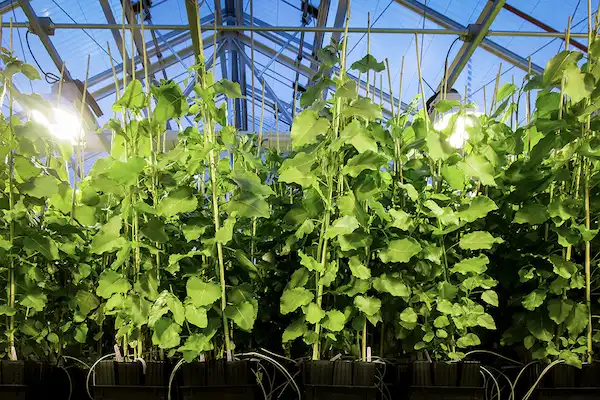A team of scientists led by Oak Ridge National Laboratory discovered the gene in agave that governs when the plant goes dormant and used it to create poplar trees that nearly doubled in size, increasing biomass yield for biofuels production and carbon sequestration.
By sequencing the messenger RNA of Agave americana, researchers found the REVEILLE1 gene that controls both dormancy and budding. A study showed that poplar engineered with the gene could potentially extend their growing season by two to three months in temperate regions.
Poplar with REVEILLE1 achieved a 166% increase in biomass when grown in a greenhouse, yielding taller trees with larger leaves and thicker stems compared with standard poplars.
“Much like the circadian clock responds to light and dark, REVEILLE genes regulate when plants are asleep in dormancy and when they’re awake,” said ORNL’s Xiaohan Yang. “We used the gene to successfully repress dormancy over two winters.”
— Stephanie Seay
Read the paper: Plant Physiology
Article source: Oak Ridge National Laboratory
Author: Kimberly A Askey
Image: Hybrid poplar trees such as these shown in an ORNL greenhouse were engineered with the REVEILLE1 gene to delay dormancy and produce more biomass. The research was led by the Center for Bioenergy Innovation at ORNL with the Joint Genome Institute, Brookhaven National Laboratory, the HudsonAlpha Institute for Biotechnology, the University of Connecticut and other partners. Credit: Genevieve Martin/ORNL, U.S. Dept. of Energy






